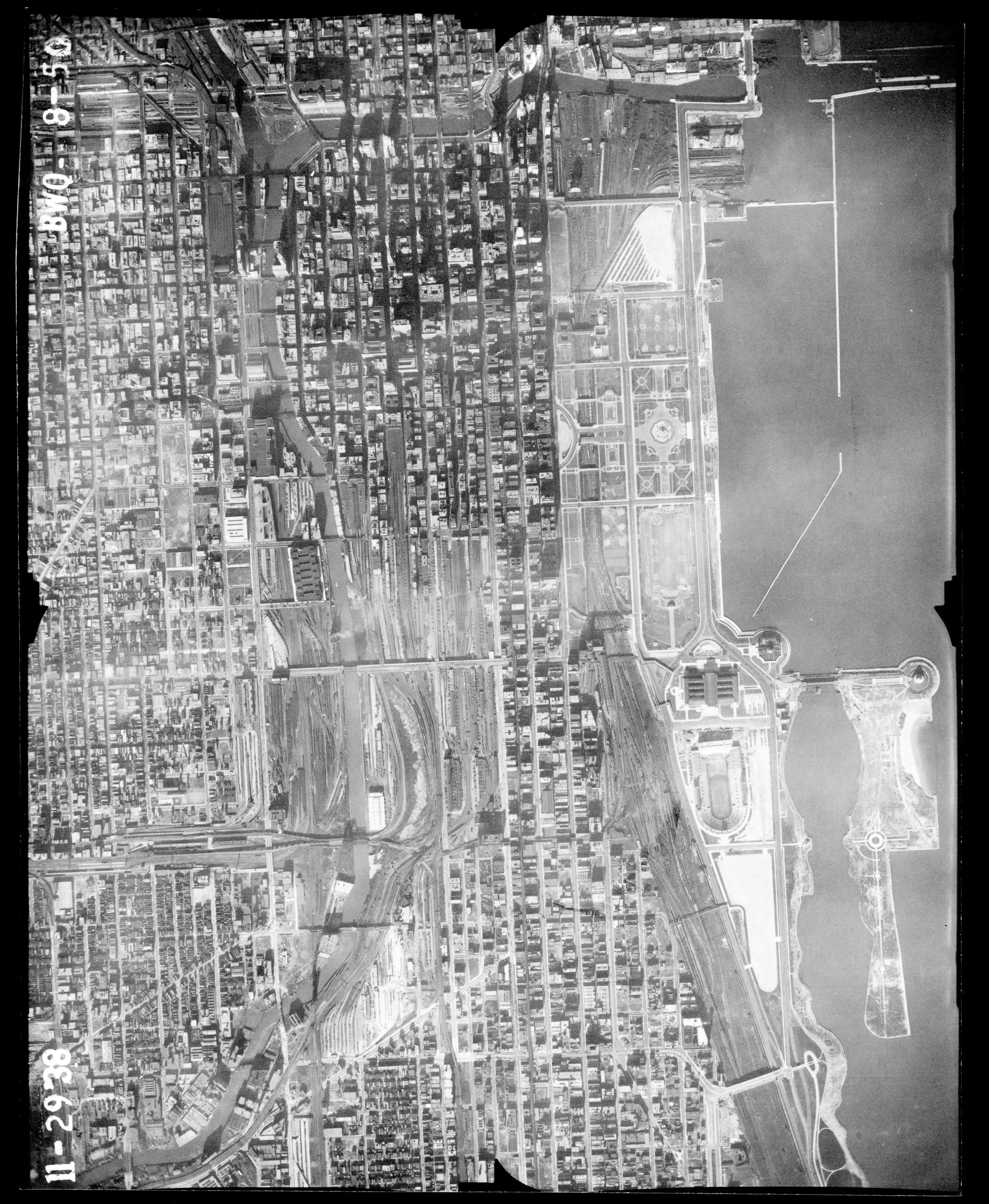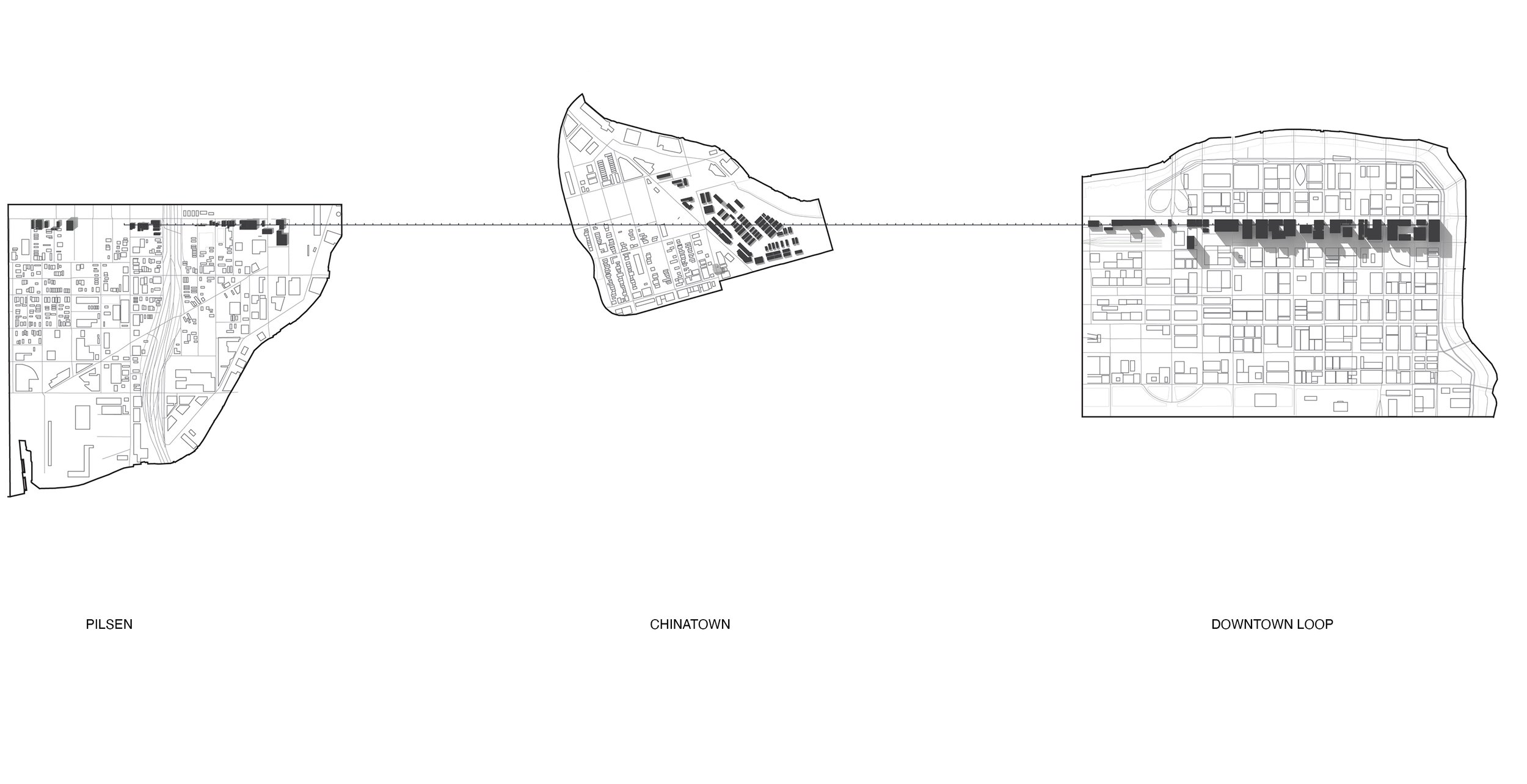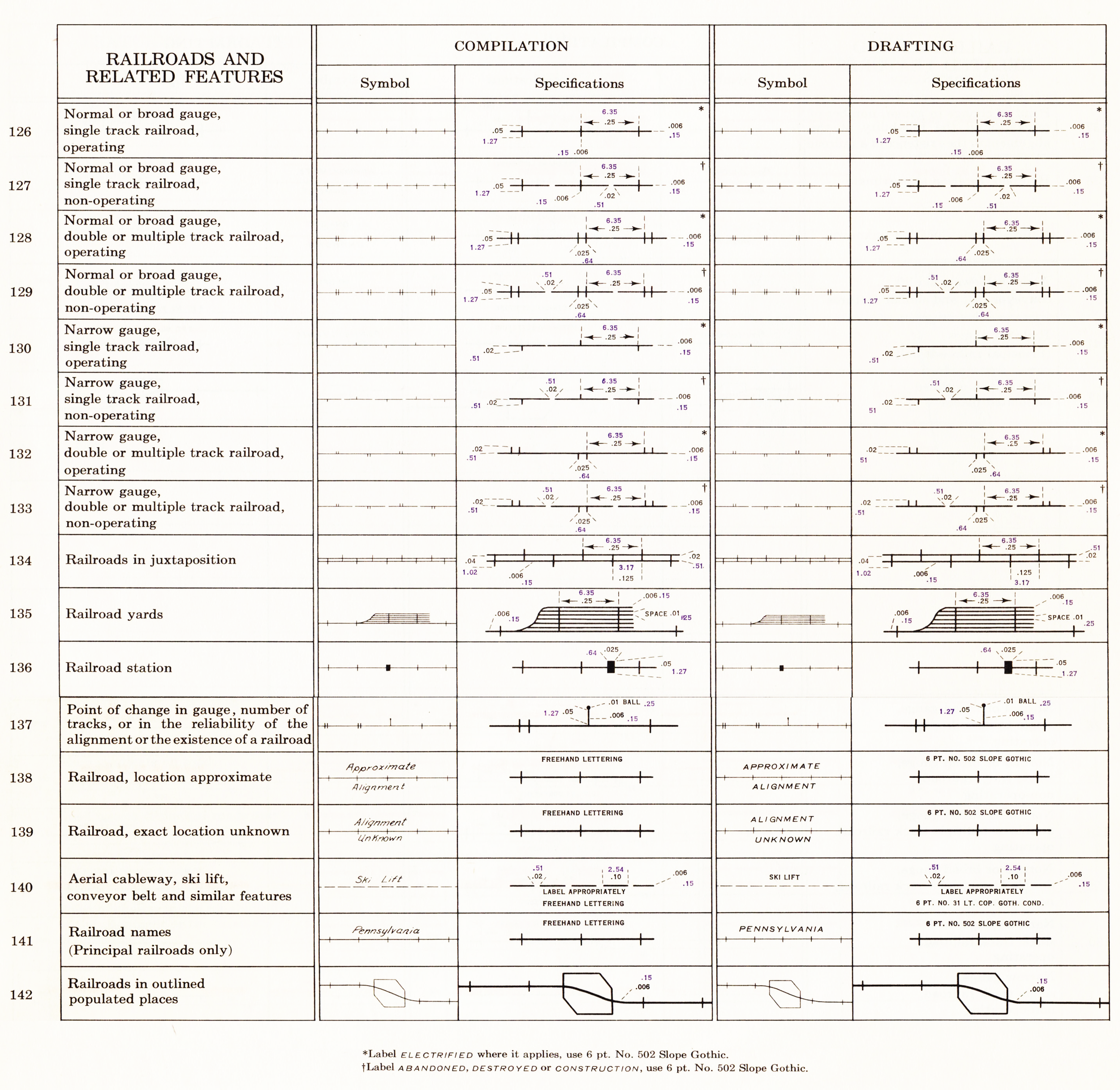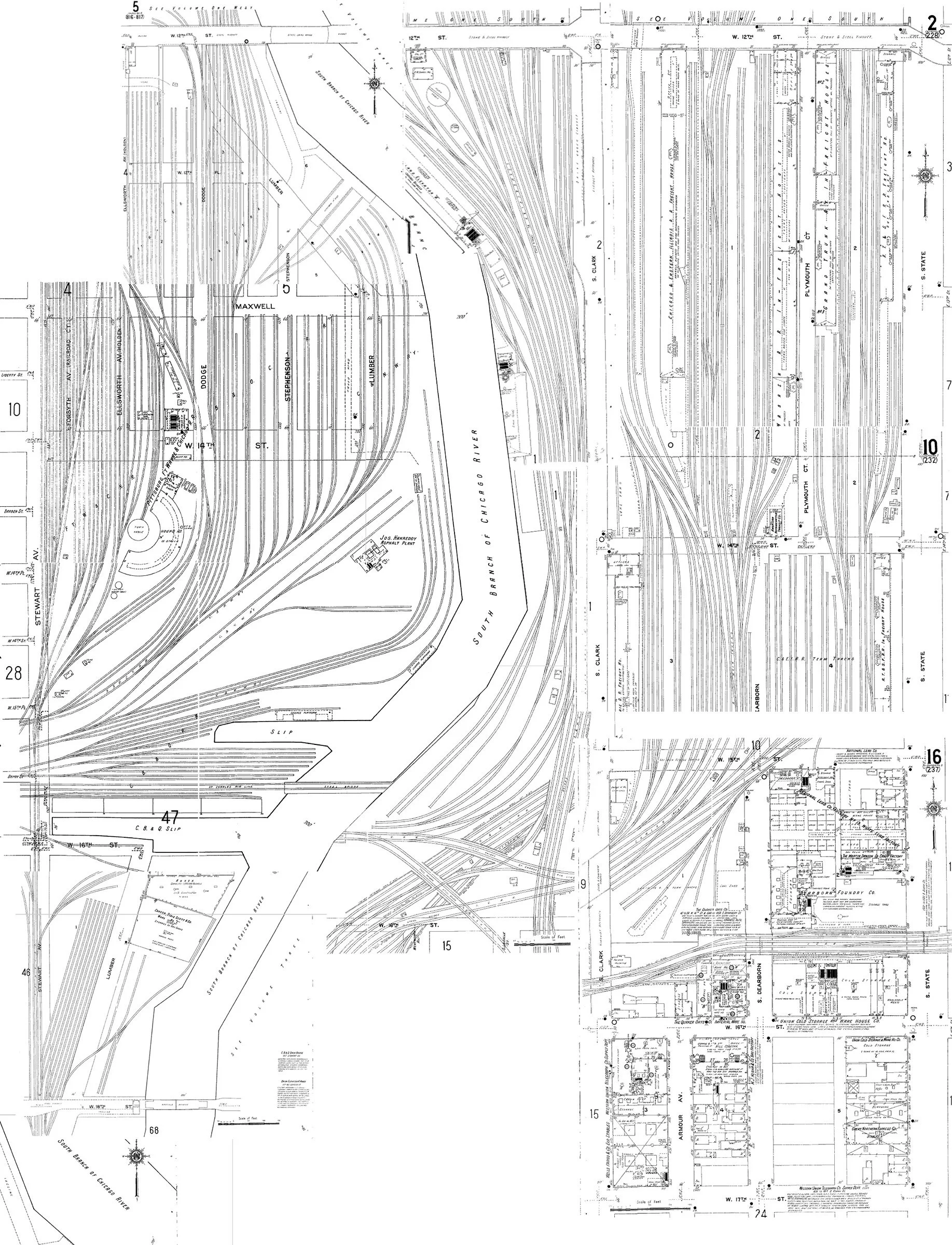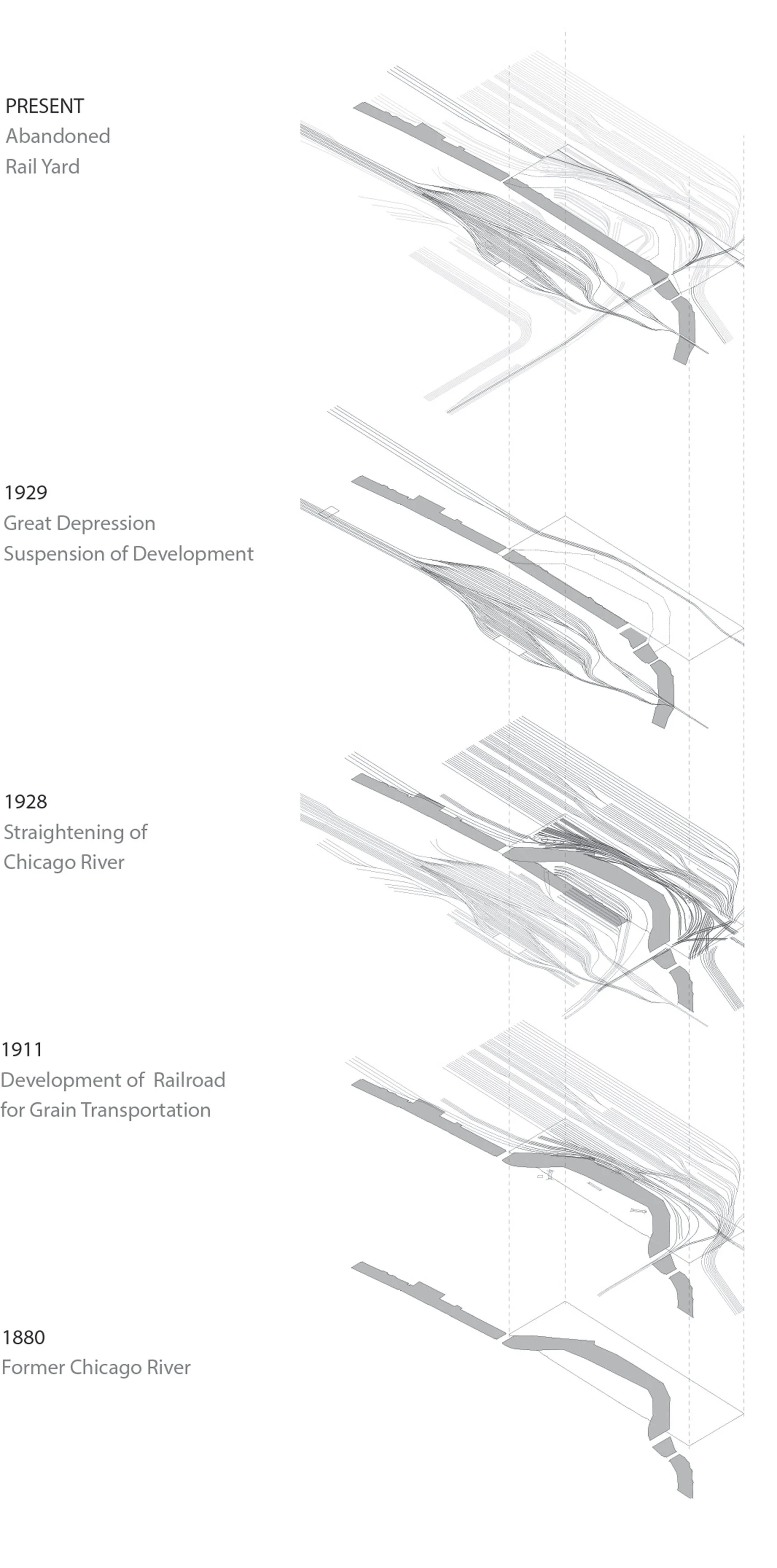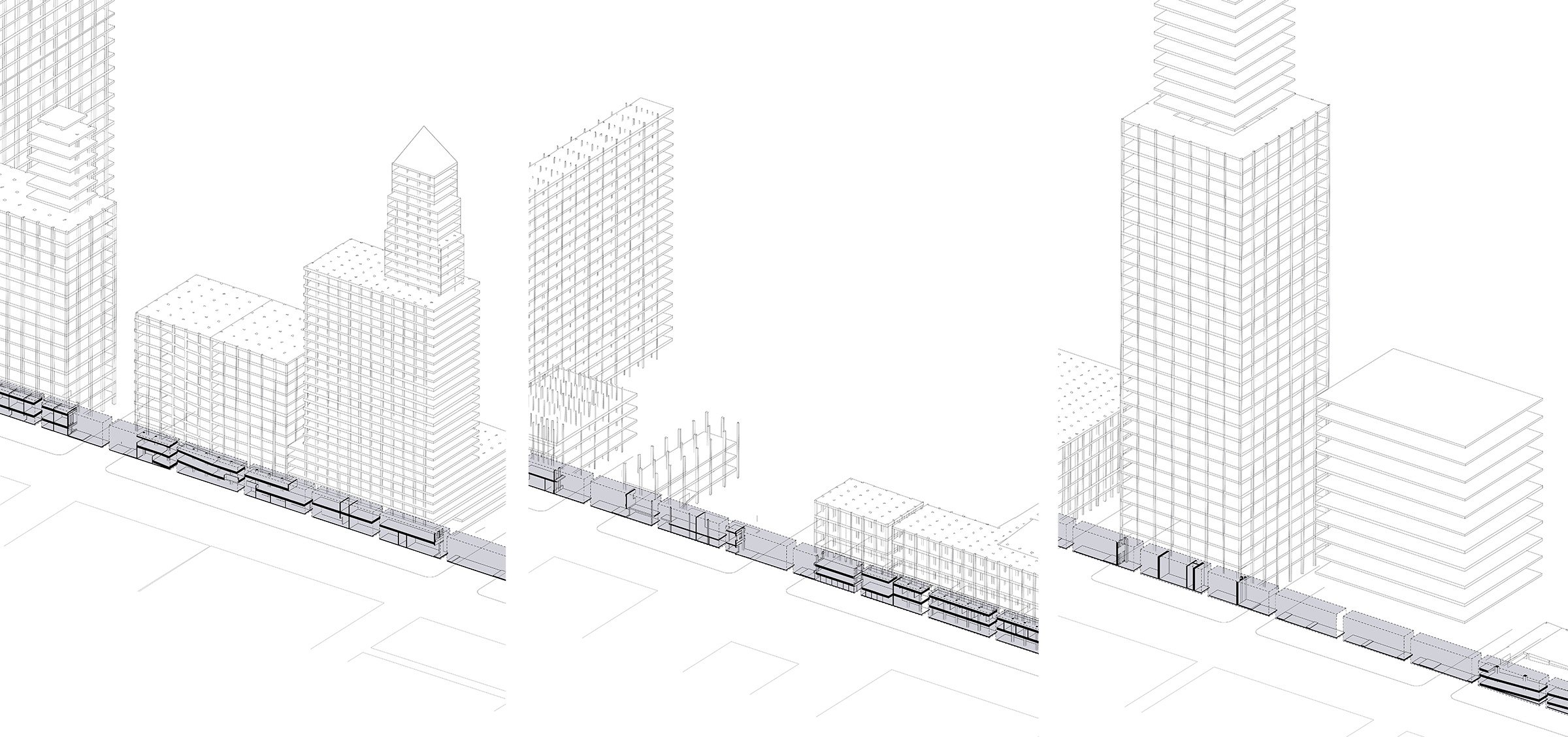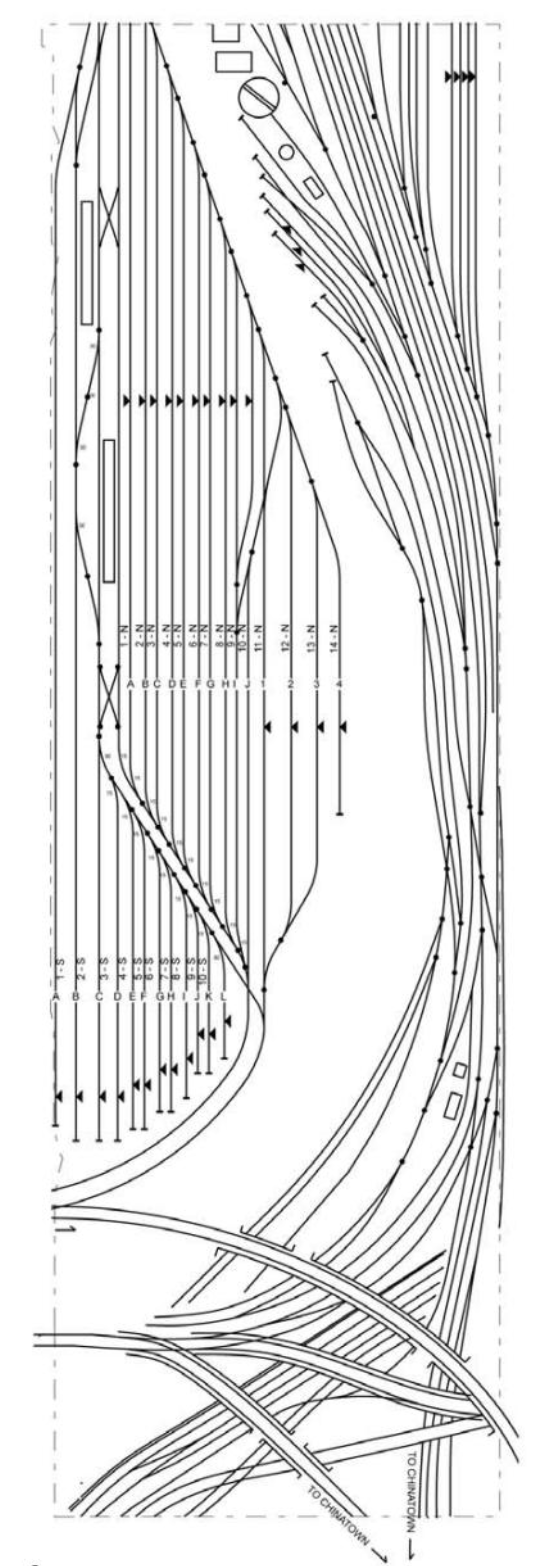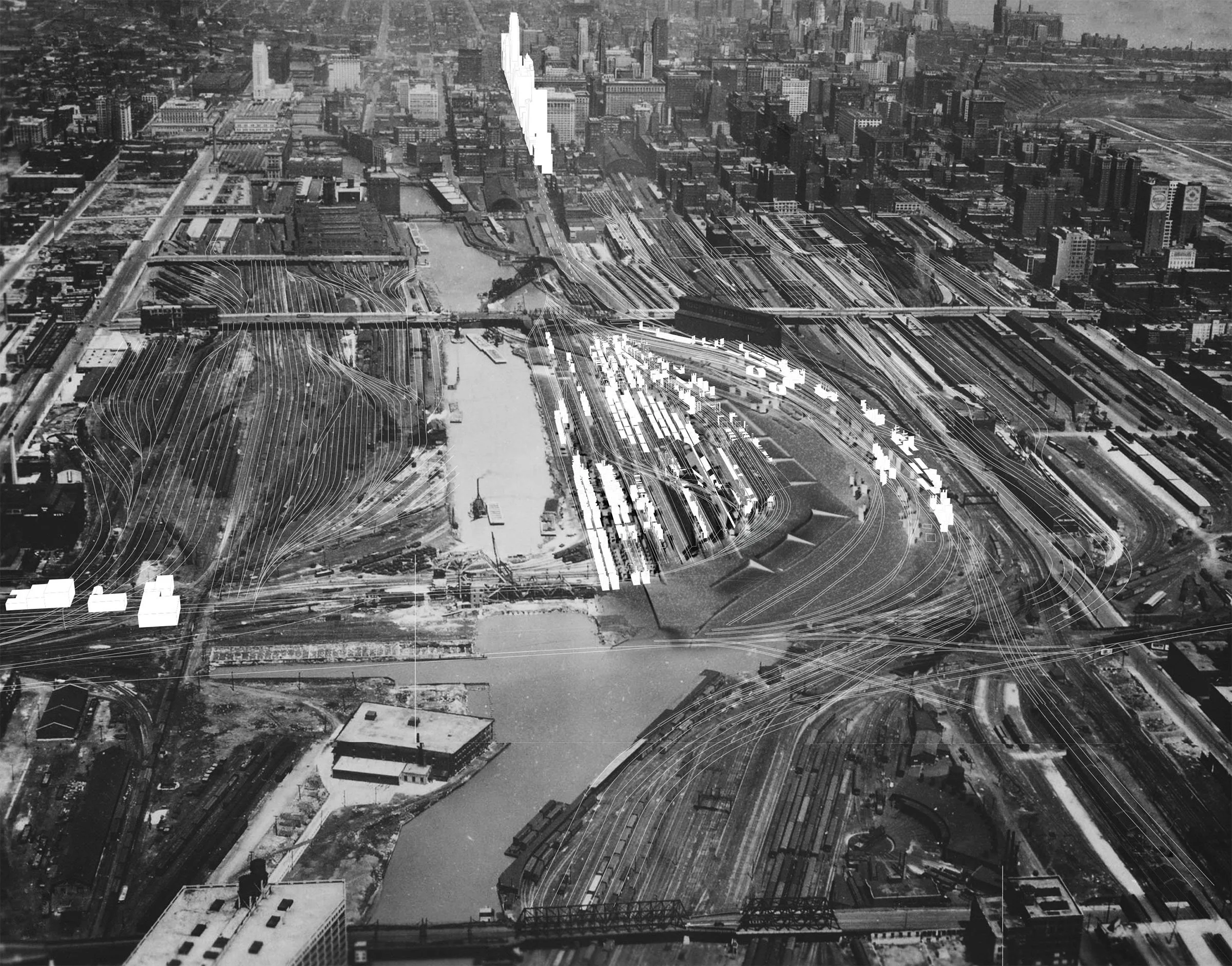Transfer speculates how defunct rail yards can become testbeds for new urban models in the post-industrial age.
As traces of abandoned infrastructure abound across cities in the post-industrial era, how can these remnants inform and create new scenarios for a more democratic future?
Old maps reveal an underlying rail infrastructure that once extended across Chicago and facilitated the movement of goods across the nation, now overtaken by housing developments. Rail maps and drawings reveal a unique logic which shaped the movement and scale of the locomotive and rail - from the rail track design, to the locomotive speed and turning radius, and its size and carrying capacity.
A series of analytical and notational drawings are created by juxtaposing the underlying rail network with the present urban condition, simulating the movement of locomotives onto the site as carriers of urban fragments from each neighborhood. In applying the logic of the locomotive onto the site in a series of time intervals, each iteration is interpreted and transformed into hypothetical urban scenarios. These conceptual experiments produce an different readings of the site - an assemblage of distinct landscapes, building typologies, and urban narratives.
These conceptual iterations are re-interpreted as new formats for urban and landscape renewal, a transposed urban vision of two conditions: one reflecting the transferred urban fragments and the other regulating spatial relations. The rail in this case functions as a substitution, an implied framework transposing present urban conditions. Within this taxonomy of transitions, differentiation of the present context is revealed.
On site, a market hall reflects the architectural possibilities of this new condition, scripting one's passage through the strata of transposed urban and landscape conditions. Tracks converge within the market hall and encourages the opportunity for multiple paths and diverse experiences. Under one large roof, the existing topography negotiates in section with the different levels of the transferred parts of the city’s contrasting entities.
In this newfound condition, the project purges the contemporary city from its enclaves by means of material, programmatic, and circulatory transfer. It asks how latent traces of a city's past can reformulate a city’s urban condition to create a more diverse urban alternative for Chicago.
2011
Thesis Advisors Lily Chi and Jim Williamson
Charles Goodwin Sands Memorial Medal for Best Thesis, Cornell University, 2012


